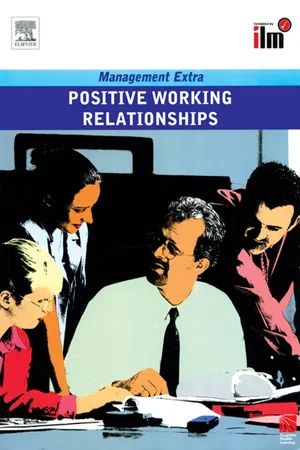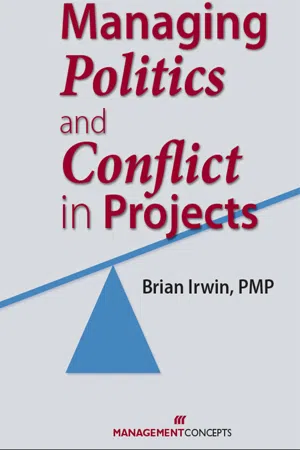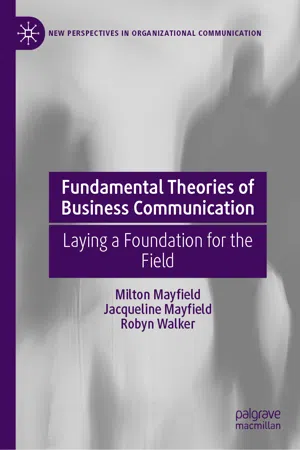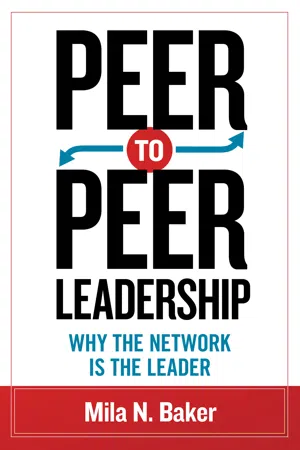Communication Barriers
Communication barriers refer to obstacles that hinder the effective exchange of information within an organization. These barriers can include language differences, cultural misunderstandings, physical distance, and technological issues. Overcoming communication barriers is crucial for fostering collaboration, understanding, and productivity within a business environment.
8 Key excerpts on "Communication Barriers"
- eBook - ePub
- Elearn(Author)
- 2009(Publication Date)
- Routledge(Publisher)
...In more ordinary situations the differences are less obvious; for example, one person might give priority to a favoured customer while another believes all customers should be treated equally – this difference might never become explicit in a conversation about customer care. Lack of trust: if we do not feel we can trust the other person we tend to conceal our own attitude, setting up barriers. Personality clash: the perception that you cannot get on with someone immediately sets up a barrier to communicating with them. Barker (2000) says that ‘Communication is the process of creating shared understanding…displaying the shape of your thinking’. Making your own perceptions clear and recognising those of others will help to achieve shared understanding. The organisation The organisation itself may be a barrier to communication. This may be because of: lack of appropriate channels; for example, you know someone in the organisation has the information you need, but do not know who they are a culture which discourages informal communication by insisting on putting everything in writing a culture of individualism, so it is difficult to obtain a corporate view a culture of conflict leading to withholding or distorting information. Overcoming barriers Referring to 11 types of barrier, Handy (1993) suggests that it is perhaps worth admiring the fact that any sensible communication takes place at all. It is up to us as sender or receiver to make conditions as satisfactory as possible so that barriers are minimised...
- Vibrant Publishers, Callie Daum(Authors)
- 2020(Publication Date)
- Vibrant Publishers(Publisher)
...A smile or pleasant look on your face can be perceived by others as welcoming and can encourage them to communicate more often with you. Also, being careful to limit your hand movements while communicating can help reduce the risk of conveying the wrong message. Most importantly, direct eye contact is key if you want the message to be most effective and have the greatest impact. Barriers to Effective Communication Communication is the most vital thing you will do in your career regardless of whether or not you are a manager. Understanding communication and its barriers will help you determine the best ways to navigate through meetings, negotiations and other critical conversations. a) Language and cultural barriers i) The use of jargon, slang, or abbreviations. There are abbreviations for everything in today’s world but not everyone is familiar with what they mean. Avoid using them to ensure that your message is clear. ii) Differences in languages and accents iii) Differences in culture b) Psychological barriers i) Emotional barriers or off-limits topics. Expressing your emotions in the workplace is not a strong skill that everyone possesses so they will find providing feedback that involves emotions challenging. Communication involving sensitive topics such as politics or religion will also be challenged as most people are uncomfortable discussing this outside of their close friend group. ii) Personal prejudices or stereotypes can distort the meaning of messages. c) Physiological barriers i) Hearing and speech disabilities d) Physical barriers i) With the bulk of messages being sent through channels that are not face to face, in ability to see nonverbal communication cues is a definite barrier. e) Systematic barriers i) Bias and politics in the workplace are major barriers to effective communication...
- eBook - ePub
A Practical Guide to Airline Customer Service
From Airline Operations to Passenger Services
- Colin C. Law(Author)
- 2018(Publication Date)
- BrownWalker Press(Publisher)
...Another example is when a cabin crew asks a customer who is not familiar with the local cuisine to choose between chicken noodles or a vegetarian meal. The customer may assume that there are three choices to choose from: chicken, noodles and vegetarian. Environmental The environment can create Communication Barriers due to the factors present at the actual communication channels. These include the layout of the location, temperature and lighting among the others. For example, before the aircraft’s final descent and landing, the purser will turn the cabin’s lights to the brightest while alerting passengers to fasten their seat belts. Demographics Factors related to demographics such as age, gender and nationality can influence the way a message is interpreted. An individual may shake their head to demonstrate that they disagree about something while another of same nationality may do the same as a gesture of agreement. In addition, the nodding of one’s head may be a universal sign of agreeing, it does not necessarily show approval. Disability Deafness, blindness or speech impairment are examples of physical disabilities that may cause Communication Barriers. External assistance may be needed in these instances to overcome these barriers in order for both the sender and the receiver to communicate effectively. Organizational The lack of communication between teams can also create a barrier to effective communication. For example, a customer seated in the first-class cabin told the cabin crew that he does not wish to be disturbed during meal time. However, the message was not conveyed clearly to the rest of the team and the customer became very upset when a serving member of the crew woke him up. Eliminating barriers to communication Clear and concise messages Frontline service agents should always use simple sentences for efficient communication with customers, especially when dealing with complicated situations...
- eBook - ePub
- Brian Irwin(Author)
- 2008(Publication Date)
- Berrett-Koehler Publishers(Publisher)
...Beware when communicating in writing that your message may be construed in a less-than-ideal manner. As a general rule, write your message and read it several times before sending it. This is especially true of critical documents and email messages. If in doubt, have someone else read your message and ask for their interpretation. Also try to keep written communication as succinct as possible. Writing two paragraphs where only one or two sentences would have sufficed will elicit either boredom or angst in your reader. Barriers to Communication We do not transmit and receive messages in a pure or pristine state. This is an aspect of communicating that makes interpersonal communication so challenging. When we communicate, we process the message through our personal filters, and then the receiver processes it again through his or her own filters. These filters are the byproduct of our past experiences, cultures, and values, and they can be barriers to communication. Let’s look at some of the more common Communication Barriers encountered within a typical project management setting, including interpretation, interpersonal style differences, and cultural differences. Interpretation As we all well know, a message may be taken out of context. In a project environment, we are often communicating issues, risks, action items, and many other items that are open to interpretation. When you send a communication, whether written or spoken, you often communicate your belief—not the fact or intent...
- eBook - ePub
Fundamental Theories of Business Communication
Laying a Foundation for the Field
- Milton Mayfield, Jacqueline Mayfield, Robyn Walker(Authors)
- 2020(Publication Date)
- Palgrave Macmillan(Publisher)
...© The Author(s) 2020 M. Mayfield et al. Fundamental Theories of Business Communication New Perspectives in Organizational Communication https://doi.org/10.1007/978-3-030-57741-4_5 Begin Abstract 5. Channels and Barriers Milton Mayfield 1, Jacqueline Mayfield 1 and Robyn Walker 2 (1) Texas A&M International University, Laredo, TX, USA (2) Marshall School of Business, University of Southern California, Los Angeles, CA, USA Jacqueline Mayfield Email: [email protected] Keywords Barriers Business communication Channels Descriptions Theory End Abstract Something there is that doesn’t love a wall —Robert Frost, Mending Wall Chapter Theories Business English as a Lingua Franca Communication Apprehension Communication Competence Genderlect Theory Information Theories Media Naturalness Media Richness Theory Media Synchronicity Theory Multimodality Social Presence Theory Source Credibility Uncertainty Reduction/ Initial Interaction Theory We should value clear messages in any business. communication. By clarity, we mean transparency, or “sharing [all] genuine information that is relevant to an employee’s work in a timely manner” (J. Mayfield & Mayfield, 2018c, p. 52). Transparency leads to increased engagement, workplace trust, organizational commitment, and perceived leader effectiveness (Holmes & Parker, 2017 ; J. Mayfield & Mayfield, 2018c ; Norman, Avolio, & Luthans, 2010). Just as important, clear business communication matters because it is ethical. We will discuss this impact in more detail later in this introduction. Theories in this category reap the advantages of transparency by giving us the tools to understand and examine the barriers to clear communication and the channels through which communication (clear or not) travels. Plus, these same theories explore the bedrock requirements of communication—how to send a message...
- eBook - ePub
- Owen Hargie, Dennis Tourish, Owen Hargie, Dennis Tourish(Authors)
- 2004(Publication Date)
- Routledge(Publisher)
...10 Communication Competence in Cross-Cultural Business Interactions Oluremi Ayoko, Charmine Härtel, Greg Fisher and Yuka Fujimoto Introduction Evidence abounds of an increasing escalation of business globalization (Bartlett, 1989; Nadesan, 2001; Prince, 2001; Sands, 2001). Increasing competitive pressure is being placed on international firms to develop worldwide communication networks within their own firms, as well as with their suppliers, customers and their external constituencies such as government agencies and special interest groups (Babcock and Babcock, 2001; Fisher et al., 2001b). This phenomenon is compounded by the constant development in technologies that allow a rapidly expanding number of messages to be exchanged within a short span of time and across large geographical distances. Communication skills that bridge cultural boundaries are therefore critical to both employee and organizational effectiveness. These trends mean that today’s organizations must find effective ways to manage the increasing heterogeneity in their workforces and consumer bases (Ashkanasy et al., 2002a). Research indicates environments where diversity creates productive conflict result in organizational effectiveness such as greater innovativeness (Jackson et al., 1992), improved problem solving and decision making, and higher levels of creativity (Härtel and Fujimoto, 1999)...
- eBook - ePub
Peer-to-Peer Leadership
Why the Network Is the Leader
- Mila N. Baker(Author)
- 2014(Publication Date)
- Berrett-Koehler Publishers(Publisher)
...Nodes can freely share and accept information from others without having to depend on a central source. Nodes and the node community are core structural elements—as natural organizational design structures that enable and provide open-source information, as opposed to creating boundaries and closed sources. Nodes and node communities provide an entirely new landscape for the transmission and use of information. The new landscape produces new patterns of information flow as well as the capacity to grow and multiply. As seeds are planted in one of area, they can just as swiftly move to other areas. Traditional Barriers to Communication How often do you see communication from your corporate communications department that everyone knew about days or weeks before the official announcement? On corporate surveys, communication and the lack thereof are often cited as one of the major deficiencies and areas of dissatisfaction among workers. Often, executives want to communicate but do not have the infrastructure in place for rapid communication. At other times, executives prefer that information be disseminated on “a-need-to-know basis,” which usually means there is as little communication as possible. How often have you heard that a person with a particular job should not speak directly with a higher-level manager? Or that a person has been reprimanded for going directly to speak with a person in a high position, such as a company director or vice president? There is even language to demark that kind of communication: “skip-level conversations.” In a traditional organization, barriers like title and position control the flow of information. Individuals with certain jobs or titles do not routinely communicate with those of higher (or lower) rank or position. When communication is needed or wanted, there are often formal procedures, unwritten rules, or outright policies against communicating with others...
- eBook - ePub
- Richard Ellis(Author)
- 2012(Publication Date)
- Routledge(Publisher)
...2 Particular Communication Barriers and ways of overcoming these We’ve looked at some of the key aspects of communication but as you know it is not as simple as that; communication often fails and messages don’t get through. There are many barriers to communication. This chapter explores some of these. It suggests ways in which we can break through these barriers. Activity But first think of some barriers to communication where you work, your firm or at college. Jot down the most common ones. Think of particular examples. In this chapter we cover ours. Compare them with yours. The systems don’t work – I can’t find the address Perhaps this is the most common reason why communication breaks down. No-one can find that piece of paper, that letter from the customer: Harry’s got it in the van and we need it here in the office or that estimate. Where did you last see it? It was on this desk I swear, someone’s picked it up. Are you sure? Dead certain. Or that scribbled telephone number Well it was here I know it! Do we need to continue? We’re sure this is familiar, probably too familiar! The question is how do we prevent these foul ups from occurring? Here is a checklist which you might find useful. Activity Just before you read ours jot down a few ideas yourself, then compare your list with ours. • Do you keep an up-to-date list of key names and addresses? • Is this list held on paper as back up to computer files? (see pages 100–101) • Who is responsible to keeping this list up-to-date? • Is there a message board at the front of the office in a prominent place where important/urgent notices can be placed? • Does someone have responsibility for keeping this up-to-date (i.e. taking old messages down)? • Do you have a message pad so that when a call comes in you can jot down the name of caller, time message taken, etc...







